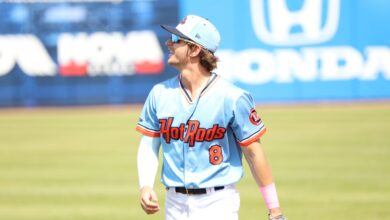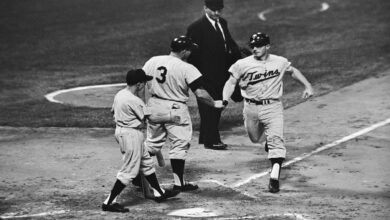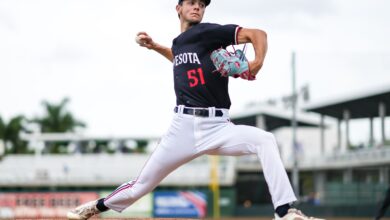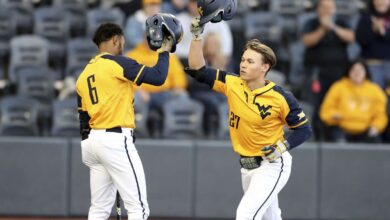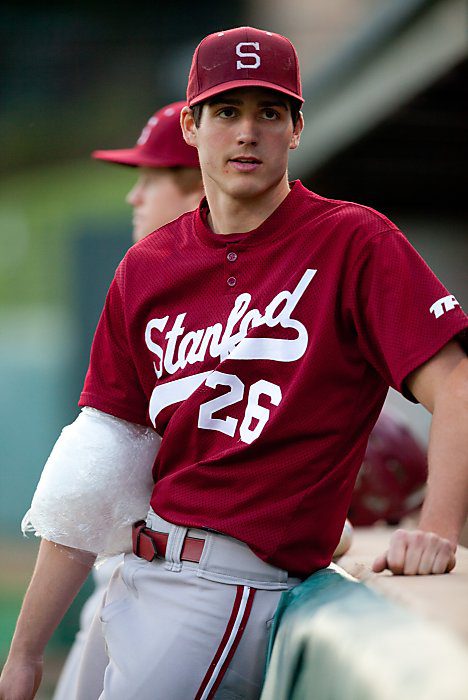

The Minnesota Twins find themselves in a somewhat unfamiliar position this June when they select second overall in Major League Baseball’s amateur draft. Following that selection, they have the 32nd, 42nd, 64th and the 73rd picks.
Notably, the Twins are recipients of several compensation picks for departed free agents. These early selections amount to five out of the first 75 overall picks. I refer to the second overall pick as an unfamiliar position because the highest overall selection that the Twins have made in the last decade was the 14th overall pick, Aaron Hicks, in the 2008 draft. Prior to 2008, you have to go all the way back to 2001 to find a year when the Twins had a single-digit draft pick (in 2001, of course, the Twins selected Joe Mauer as the first-overall pick). A later draft assignment is largely the product of fielding a competitive team for much of the last decade. Unfortunately, the Twins’ farm system, once the pride of baseball, could now more accurately be described as “another middle of the pack organization.” The 2012 draft, then, will provide the Twins an opportunity to replenish their minor-league system with top prospects.
I don’t pretend to be an expert on farm systems or player development, but in my opinion, the best thing the Twins can do with a couple of these early selections is to draft the best available pitchers. At my blog, Twins Fan From Afar, I recently posted on how ace pitchers, or dominant pitchers, are acquired. In that post, I examined 12 of the most dominant pitchers in the game — Justin Verlander, Clayton Kershaw, Tim Lincecum, CC Sabathia, Felix Hernandez, Cliff Lee, Roy Halladay, Jered Weaver, Dan Haren, Yovani Gallardo, Matt Cain and Chris Carpenter.
Regardless of whether you classify these guys as aces, gamers or number-one starters, most players and fans would be thrilled to have any of these 12 pitchers leading their team’s starting rotation. The one-sentence summary of that post: Of the 12 pitchers, eight were selected in the first round of the amateur draft, two were picked in the second round, one in the fourth round, and the final player was signed as an international free agent. In short, scouts are pretty good at targeting top pitching talent, and teams recognize talent by drafting it early. For the Twins, then, recent history suggests their best shot at acquiring a pitcher with the potential to eventually lead the staff is, very likely, by selecting pitchers with the first few draft picks.
Why should the Twins target pitching, and not another position of need, with these important and early picks? That’s a fair question. The Twins, for all their shortcomings in 2011 — including having to overutilize minor-league players at the major-league level — are somewhat well stocked at certain positions, both now and in the next few years. For instance, the Twins’ outfield situation actually looks very promising. In addition to Denard Span and Ben Revere, both of who are capable of playing center field well and contributing at the plate, Joe Benson, who last year experienced a taste of Target Field in a September call-up after a solid season at double-A New Britain, and Aaron Hicks, rated the 72nd-best prospect in baseball in 2012, both project to be capable major-league outfielders within the next couple seasons. Moreover, this past offseason, the Twins recently signed veteran outfielder Josh Willingham to a three-year contract. There could actually be a logjam of quality outfielders in a couple seasons — a nice problem to have, in my opinion.
The left side of the infield does not look as bad as it did just a few years ago. Although no all-star, Danny Valencia has proved himself to be capable of manning third base, and showed up to spring training this month looking like a more complete player. Furthermore, the Twins’ top prospect, Miguel Sano, is projecting as a third baseman with exceptional power, and hopefully will be ready to contribute at the major-league level in 2014. At shortstop, the Twins signed veteran backup Jamey Carroll for two years, but have suddenly promising prospect Brian Dozier waiting in the wings, and last year’s first-round pick, Levi Michael, set for single-A ball.
The right side of the infield raises more questions, especially with respect to the health of first baseman Justin Morneau, but prospect Chris Parmelee demonstrated, albeit in a small sample size last September, that he should be capable of stepping in and playing first base if Morneau cannot play. Additionally, Mauer, who was an all-state selection in high school football and basketball (in addition to baseball, of course), has demonstrated that he is versatile enough to cover first base when necessary. At second base, the Twins hope that Alexi Casilla remains healthy and productive — feats that have not often coincided for any great length of time — but the team is actually having outfield prospect Eddie Rosario (the organization’s third-best overall prospect) get experience at second base. Finally, while there isn’t much depth at catcher, the Twins did sign Mauer to play there predominately, and now have Ryan Doumit, who surprisingly has not looked awful behind the dish thus far in spring training. Interestingly, the organization also has a couple of decent catching prospects on the way up, including Chris Herrrmann. I’m not suggesting that all of these positions are “locks” for the next 10 years, but I am suggesting that starting pitching, comparatively speaking, is weaker.
The Twins’ pitching rotation will look very different in 2013 than it does in 2012. Carl Pavano will become a free agent, as will Francisco Liriano, and the Twins hold a $9.25 million team option on Scott Baker, who, in flashes, has been brilliant, but also has demonstrated the inability to stay healthy for a complete season. Only Nick Blackburn, much to the chagrin of many in Twins Territory, is a lock for 2013. The Twins are hopeful that once-promising prospect Kyle Gibson will demonstrate in 2012 that his recovery from Tommy John surgery was a success, and that he will be capable of assuming a position in the rotation in 2013. Gibson’s success in 2012, however, is anything but a guarantee. The Twins do have good minor-league pitching prospects, such as Liam Hendriks and Alex Wimmers, but it’s fair to state that no Twins pitching prospect currently projects as a staff leader or an ace. Much like many other organizations, there’s no Verlander, Sabathia or Lee waiting in the wings for the Twins.
In short, if the Twins are able to draft the best healthy pitcher available with the second overall selection this year, and if that player can quickly advance through the minor-league system, in all likelihood, there will be very few veteran major-league starting pitchers standing in that player’s way. Names like Mark Appel and Chris Beck are intriguing, but I honestly am not sure whether a college or high school pitcher is preferable. In the end, though, the eventual success of the pick is more important than the identity and age of the player, and I hope the Twins make one or more solid pitching selections with their unprecedented number of early round picks.


